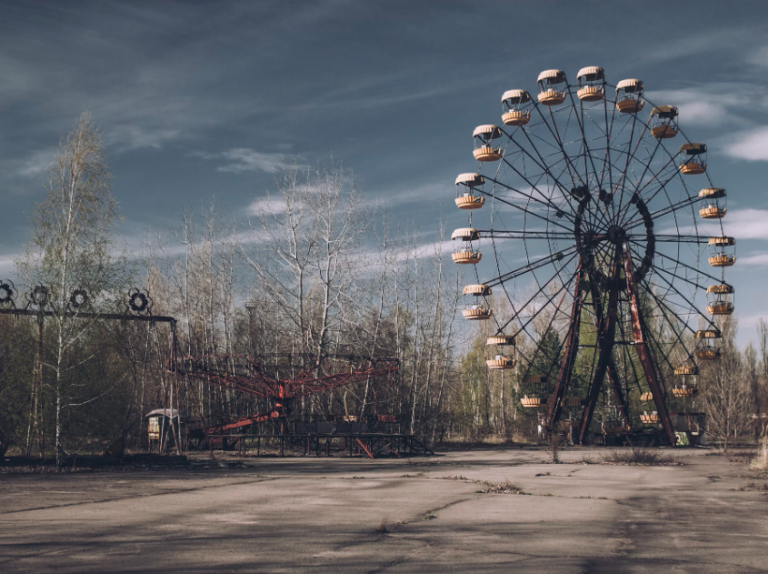When you hear about nuclear accidents, it’s impossible not to feel a shiver run down your spine. Even if most people have never had direct or indirect experiences of this type, mass media reports and an instinctive fear for something that is not visible such as nuclear radiation, brings us to a real and just terror about it.
Nuclear accidents are measured according to the International Nuclear Event Scale (INES). Which, although not a perfect representation of the severity of an accident, is the only index available with a minimum of reliability.
On the INES scale there are 8 levels, from level zero, assigned to minor anomalies with no safety relevance, up to level seven, for the most serious disasters. Also, it is important to know that this is a logarithmic scale index. Thus meaning that each subsequent level is approximately 10 times more severe than the previous one. With all this in mind, here are the 10 most serious nuclear accidents in history.
Table of Contents
Chernobyl (Ukraine)
The Chernobyl nuclear disaster occurred on April 26, 1986, when the nuclear power plant was under the control of the authorities of the Soviet Union. An explosion and fire released large quantities of radioactive particles into the atmosphere, which spread over much of the western USSR and Europe.
It is considered the worst nuclear accident in history in terms of costs and deaths. It is classified as a level 7 event on the international nuclear event scale.
To contain the contamination and avoid greater damage, 500 billion rubles were used. 31 people died in the accident while trying to put out the fire. But the long-term effects on people’s health have not yet been accounted for.
Fukushima (Japan)
This accident, also classified as a Level 7 event, was caused by a catastrophic failure at the Fukushima I nuclear power plant on March 11, 2011. Thus resulting in the collapse of three of the plant’s six nuclear reactors.
The error occurred when the plant was hit by a tsunami triggered by the Tōhoku earthquake. However, no one died during the accident. But the consequences on people’s health were dramatic and, according to some studies, induced not only by the contamination but also by the stress of the event.
Kyshtym (Russia)
It was September 29, 1957 in Mayak, Soviet Union, a plutonium production site for nuclear weapons and a nuclear fuel reprocessing plant, when the accident occurred. Radioactive contamination, a level 6, hit the city of Ozërsk, built around the plant.
Since Mayak/Ozërsk is not marked on maps, the disaster was named Kyshtym, after the nearest known city. The number of deaths in this accident is unknown due to Soviet censorship.
Windscale (UK)
The Windscale fire, which occurred on 10 October 1957, was the worst nuclear accident in British history. It is classified at level 5 on the International Nuclear Event Scale.
That day, the Unit 1 reactor core caught fire, burning for 3 days, releasing radioactive material across the UK and Europe. It was estimated that the accident caused 240 new cases of cancer.
Three Mile Island (United States)
This accident occurred on March 28, 1979 in Dauphin County, Pennsylvania, with the partial meltdown of one of the nuclear reactors. The incident was classified as level 5.
Goiana (Brazil)
An accident involving radioactive Cesium-137 contamination occurred on September 13, 1987 in Goiânia, in the Brazilian state of Goiás. It all started with the theft of an old radiotherapy source from an abandoned hospital site. Then passing from hand to hand, it caused four deaths and contaminated 112,000 people.
SL-1 (United States)
It was an experimental US Army nuclear reactor that exploded on January 3, 1961, killing three operators. The accident released approximately 80 curies of iodine-131 and approximately 1,100 curies of fission products into the atmosphere.
Saint-Laurent (France)
The Saint-Laurent Nuclear Power Station is located in the municipality of Saint-Laurent-Nouan in Loir-et-Cher, on the Loire River, 30 kilometers from Orléans. On October 17th 1969, 50 kilograms of uranium in one of the reactors began to melt. This incident was classified as level 4.
RA-2 Research Reactor (Argentina)
On September 23, 1983, during an experiment in the reactor core configuration, errors were made in violation of safety regulations by an operator who received 200 Rads from gamma rays and 1,700 Rads from neutron rays. This enormous amount of radiation killed him in two days.
Tokaimura (Japan)
Tōkai is a village located in Japan, on the Pacific coast. On September 30, 1999, an accident in the nuclear reprocessing plant, caused by the inexperience of 3 workers who were preparing a small batch of fuel for the experimental Joyo breeder reactor, triggered the chain reaction of nuclear fission, with the emission of large amount of gamma rays and neutron radiation.
Read also: From Asia to Europe, these countries are investing in nuclear energy again












